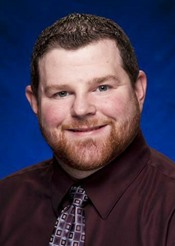Program Information
An Investigation of Two Novel Devices for Testing Linac Clearance During CT Simulation
A Morrow , B Massingill*, Scott & White Hospital, Temple, TX
Presentations
SU-F-T-496 (Sunday, July 31, 2016) 3:00 PM - 6:00 PM Room: Exhibit Hall
Purpose: This work’s objective is to determine the efficacy of two newly patented devices termed the Mor-O rings, Mark1 and Mark2, developed to predict collisions between the patient and a linac at the time of CT simulation.
Methods: Mark1: A ring with an inner radius equal to the distance between the isocenter and the nearest portion of a linac head(diso) was made. This is mounted to a stand that allows vertical repositioning. The ring is placed around the patient on the CT table and aligned with isocenter. The patient is moved through the ring. If the ring touches the patient, a collision is predicted. To test this device, predicted collisions were marked on a phantom. The phantom was then repositioned on the linac table where the collisions were verified. Mark2: An arc with the radius diso was created with a re-locatable half-linac head wire-frame. The Mark2 is positioned in the same way as the Mark1 but can additionally mimic couch and gantry angulations. The Mark2 was tested with a volunteer using multiple couch, gantry and isocenter positions. The volunteer was then repositioned on the linac table to verify the angles of collisions.
Results: Mark1: One isocenter out of ten showed negative clearance (0.9mm) on the linac table. All other collisions were predicted with 1 to 36mm of additional clearance. Mark2: All collisions were prevented with an additional 1.3 to 14.8 degrees of clearance.
Conclusion: The Mark1 prototype is able to predict all collisions when no couch angulation is used. This device takes less than a minute to setup and is simple to use. The Mark2, when testing beam geometries used for non-coplanar SBRT, was able to prevent all collisions with 1.3 to 14.8 degrees additional clearance. Improvements in construction for both devices could increase accuracy and usability.
Funding Support, Disclosures, and Conflict of Interest: Andrew Morrow owns Morrow Physics, LLC and Brian Massingill owns Spur Physics, LLC. We are both listed on the patent for the devices investigated in this work (patent 9220922). Our current employer, Baylor Scott and White, is also on the patent.
Contact Email:

